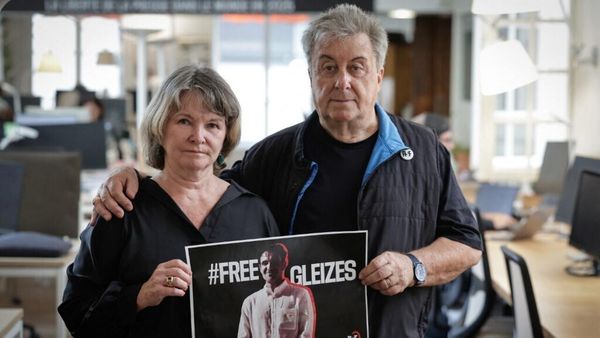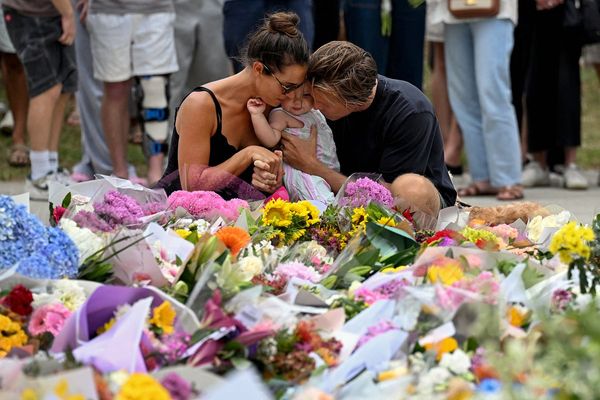
When Sydney couple Matthew Henderson and Jacqui Nissim realised their family had outgrown their two-bedroom apartment, they got creative. Given the unaffordable prices of a standalone house in Randwick, a vibrant suburb in the city’s east, they opted to renovate a sunroom.
“We had to take a creative approach and create a flexible third bedroom,” Henderson says. “Otherwise we would need to move away from here, and we’d be moving further away from jobs, further away from work and schools.
“The compromise we came up with was to remain where we were, but create a third space.”
They say other families in the area with two school-age children like them are drawing up similar plans, with some in top-floor apartments hoping to buy attic space from strata owners to expand.
Nissim says the lack of suitable homes is even weighing on school enrolments as growing families move out of the area in search of third bedrooms.
“Families can’t afford to keep living here, which is changing the demography of the suburbs,” Nissim says.
“It’s short-term thinking when governments don’t plan what our cities need to look like to be vibrant and diverse.”
Sign up: AU Breaking News email
As standalone homes become prohibitively expensive in Australia’s big cities, three-bedroom units have become a sought after compromise for those outgrowing smaller apartments but who want to stay in their community.
But while larger, family-friendly apartments are in fierce demand, they are almost nowhere to be found.
Scarce supply
Tim Reardon, the chief economist of the Housing Industry Association, says larger units tend to be luxury apartments, designed to attract older families or couples who are downsizing, who often have plenty of cash.
“Occasionally, somebody will build something that isn’t a two-bedroom or one-bedroom apartment, and that’s called the penthouse,” Reardon says.
“There should be a market that provides family-oriented, higher-density housing, be it apartments or townhouses, and there is an acute shortage of that. The problem is that we have a shortage of all types of housing in all locations.”
The huge demand for family-friendly apartments is another ripple in the housing crisis caused by a chronic undersupply of homes that is weighing heavily on younger generations. The problem is most severe in Australia’s capital cities, many of which are more unaffordable than global cities like London and New York.
PropTrack data shows the availability of larger units has plummeted in Australia, with the already low level of listings of three-bed apartments falling 8% over the past 12 months.
When they are for sale, they tend to be snapped up immediately.
Gautier Lam, a property agent in Sydney’s inner west, says three-bed apartments are so sought after that about 50 to 60 prospective buyers typically inspect them as soon as they hit the market.
“A lot of the people who want to upsize from a unit to a townhouse or a house are finding them just too expensive,” Lam, from the agency Hudson McHugh, says.
“That’s why people go to the next-best option, which is a three-bedroom unit, but the problem with that is there’s such a scarce supply.”
The hot demand pushed prices for three-bed apartments up by more than 11% in Sydney over the last financial year, according to Domain data – more than double the price rises of one and two-bedroom varieties.
‘Raising kids in a Parisian apartment is normal’
One of the main reasons so few three-bedroom apartments are built is that it is more profitable for developers to focus on smaller units than spacious, family-friendly options.
In Adelaide, which is facing a severe housing shortage, a typical one-bedroom apartment sells for just over $460,000 and a two-bedroom for $565,000.
A three-bedroom Adelaide unit sells for $765,000, according to median prices calculated by Domain, which is well under what the seller can get for the combined price of the one and two-bedroom units – even taking into account that the smaller apartments must have individual amenities such as kitchens.
While housing economists expect demand for three-bed apartments to – eventually – convince developers to build more, the wait time could be substantial.
Experts say there are cultural and geographic reasons for the local apartment market being so far behind comparable nations. Australian cities have been able to sprawl to accommodate the appetite for homes with back yards.
Global cities with a longer history of apartment living, like Paris, are far more likely to offer diverse living options for different-sized families.
Patrick Joseph, a UK-based property specialist who helps people buy in France, says London and Paris offer more family-friendly apartment options than Australian cities. He says standalone houses in Paris are almost nonexistent, making a large apartment the aspirational home of choice.
“Raising kids in a Parisian apartment is normal, but it requires embracing a minimalist, urban, and often hectic lifestyle,” Joseph says.
“In Australia, the cultural preference for standalone homes and more available land has kept the large apartment niche.”
‘We’re building communities together’
In Sydney, Henderson says the lack of suitable and affordable housing is a byproduct of policies that treat property like a money-making scheme rather than a home.
“Materially, things aren’t going to change for people without structural economic reforms [including] to negative gearing and capital gains tax,” he says.
Australia’s unaffordable housing market has been linked to the Howard-era decision to halve the rate of capital gains tax, making dwellings even more attractive to investors who have also taken full advantage of favourable negative gearing rules.
A string of state and federal governments have also failed to plan for supply shortages.
Some advocates have suggested state governments should compel developers to construct larger apartments, but they have been reluctant to pursue that approach, fearing it could slow down new builds during the housing crisis.
In the absence of state action, some local councils have introduced mandates for versatile units to accommodate families.
John-Paul Baladi, the mayor of the Sydney council of Strathfield, says new residential projects with 10 or more dwellings will soon need to ensure up to 20% of the apartments have three bedrooms. A handful of other Sydney councils, including Canada Bay, are either considering or have implemented similar mandates.
“We’ve got excellent schools in our community and I don’t want to see the departure of families from our very family-oriented community,” Baladi says.
“A family who may not be able to afford a house in Strathfield should still have the option of being able to move into a unit that is actually catered towards their lifestyle.
“Our partnership with industry should ensure that we’re working together and building communities together and not having communities dumped on us. We don’t want development to happen to us – we want development to happen with us.”







